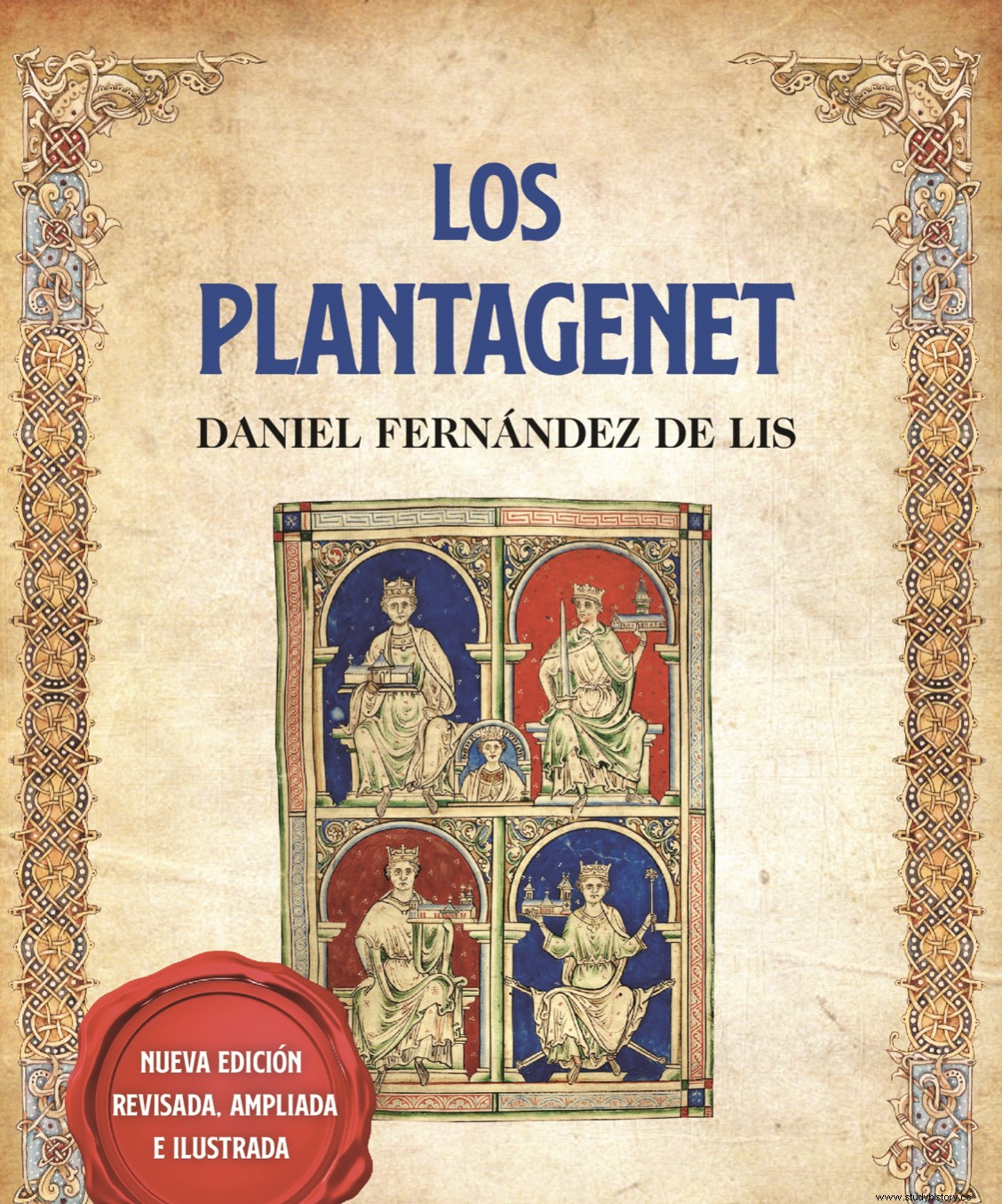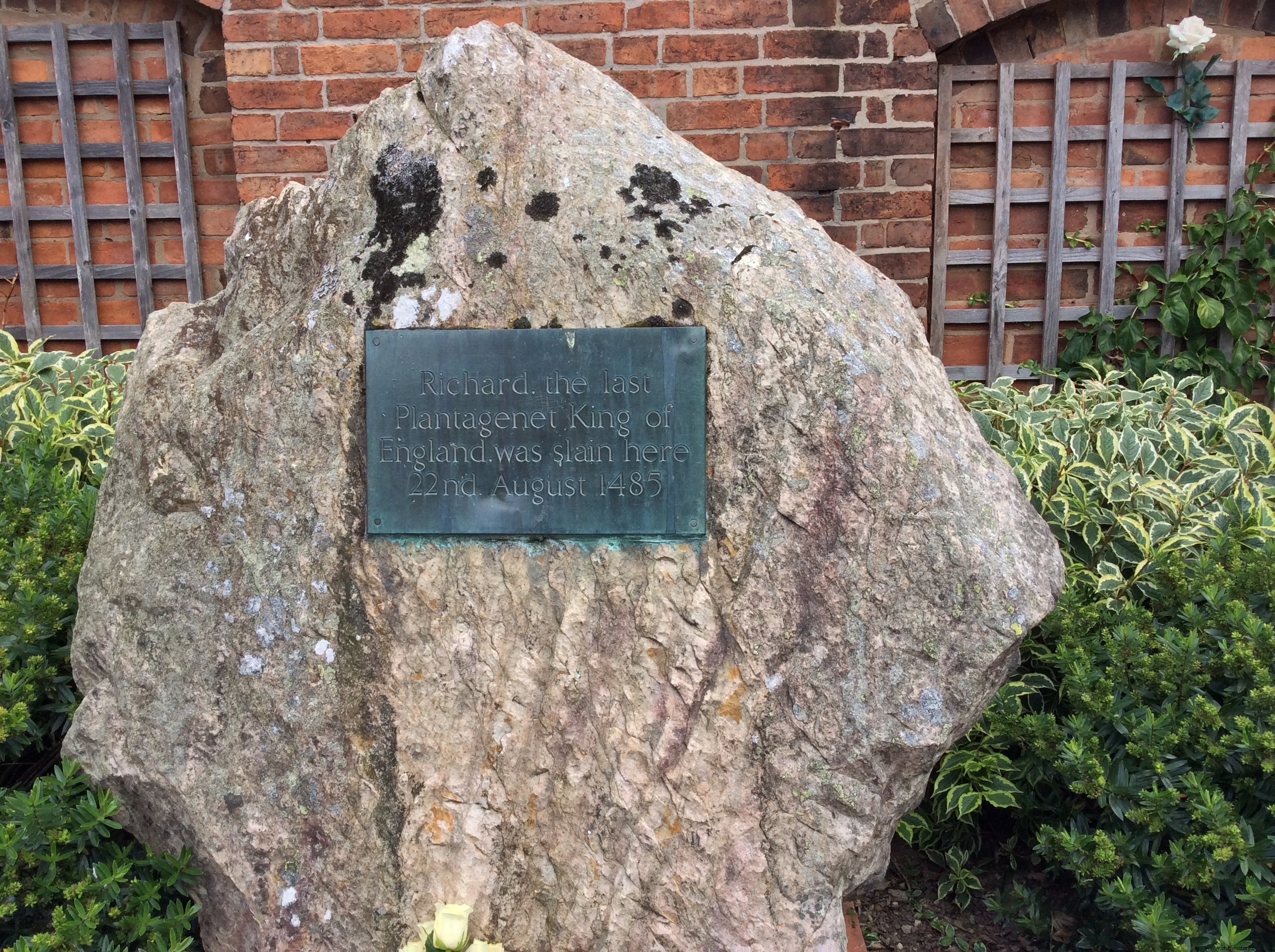 Entry taken from the book The Plantagenets
Entry taken from the book The Plantagenets
A few months ago, the body of English King Richard III was buried in Leicester. It may surprise you that the remains of a king who died in 1485 are buried in 2015. This is the story.
In 2012, a group of researchers from the University of Leicester led by Richard Buckley surprised the world with a piece of news:they had located in a city car park the remains of King Richard III. Richard was the last king of the Plantagenet dynasty and died at the Battle of Bosworth in 1485. Richard III had come to the throne in 1483, after the death of his brother Edward IV, after having Parliament declare his sons illegitimate. of the. At Bosworth he was defeated by Henry Tudor's army. As a poster in the exhibition at the site of the Battle of Bosworth says, that was the last charge of the Plantagenets; the dynasty that had reigned in England for more than three hundred years and to which such famous kings as Richard the Lionheart, Juan Sin Tierra and Eduardo I Longshanks belonged, passed into history. And so began the era of the no less formidable Tudor dynasty.
Richard III is one of the most controversial kings in English history. Vilified for hundreds of years by Tudor propaganda (William Shakespeare and Tomás Moro among others), in recent years the movements that claim his figure have spread. The episode that still raises the most controversy about Richard III is the death of his nephews, the princes of the Tower, to which I dedicated an entry in this same publication that is reviewed at the end of this article.
But the The reason for today's post is not to talk about the reign of Richard III, but about the story of how his remains were found five hundred years after his death in Bosworth and the investigations that led to the identification of the skeleton as that of the famous English king.
From the outset, although it may surprise the fact that his remains were discovered in a car park in Leicester, it must be clarified that this circumstance is not so surprising nor did it occur by chance. The car park in question was opposite Leicester Cathedral and on land occupied in the time of Richard III by a Franciscan convent to which, according to various chronicles, the body of the king had been transferred after his death in Bosworth, although other sources affirmed that his body was thrown into the river after his death.
What is an ironic detail is that the remains of Richard III appeared just below a parking space that was marked with the letter R.

A stone marks the place where Richard III died in Bosworth (photo:author's archive)
The problem with locating the remains of Richard III was not so much determining the location of the remains as undertaking a serious task to carry it out. And in this Philippa Langley played an essential role, who was the one who managed to convince the University of Leicester to carry out the necessary excavations to locate his remains. He launched a funding campaign among members of Richard III societies around the world and raised the £10,000 the project required... in less than two weeks.
As I was saying, researchers at the University of Leicester collated the information that affirmed that Ricardo was transferred to the convent of the Franciscans with old plans of the city to determine the location of that disappeared convent and excavated in the parking lot. The images of the team's excitement upon discovering the remains of a man buried under the square marked with the letter R are worth seeing.
The researchers' first impressions clearly pointed to the skeleton belonging to Richard III; Shakespeare and other historical sources pointed out that the king was hunchbacked. And the corpse found had a spinal deformity that fit that description.
Evidently, this information was not enough to affirm that the remains were those of Richard III. A first test was to determine the age of the skeleton. The team led by Richard Barkley established the date of his death between 1450 and 1540. The first obstacle had been overcome.
From then on, the University of Leicester undertook the arduous task of tracing the family history of the monarch (who died without offspring) to try to carry out a DNA analysis to confirm his hypothesis. After months of work, they located a man, a Norwegian named Michael Ibsen, who was a descendant of Richard III's father. Initially shocked by the fact that he was a Plantagenet, Ibsen agreed to undergo a DNA test, which found such a close match with DNA from the remains of the Leicester car park that it has led the University team to certify that this The skeleton found behind the square marked with the letter R is that of Richard III.
Two other teams had been working simultaneously. The first, led by Professor Caroline Wilkinson, made a facial reconstruction of Richard III from his remains. The second, directed by Jo Appleby and Bob Woosnam-Savage, established the causes of his death and, above all, if they could have been caused by weapons that existed in the fifteenth century. His conclusion was positive. I had the opportunity to attend an interesting lecture by Bob Woosnam on the subject in celebration of the anniversary of the Battle of Bosworth.
After a long legal battle between the University of Leicester and a group of alleged descendants of Richard who claimed bury him in York, the courts sided with the university and the remains of Richard III will be buried in Leicester Cathedral in March next year. It is a very personal opinion, but I think it would have been more appropriate to bury the last Plantagenet in York.
A few months ago, in a Winchester bookstore, I found a book that talked about the discovery in that city of the remains of another famous English king, Alfred the Great. We will talk about it…. but that's another story.
Via| DVD:Richard III, the King in the park &The Unseen Story
